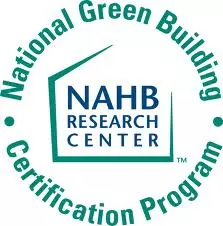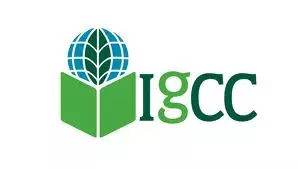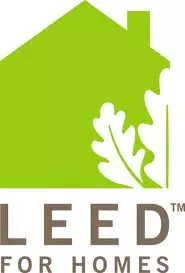Who Says I'm Green?
National Green Standards can determine your level of green!
National Green standards strive to minimize the impact on the land, to better use energy and water resources, to enhance durability of the products used, to provide better indoor air quality and ultimately educate the homeowner on proper operation of the home’s systems and proper maintenance of the home and it’s components. Looking for a "Certified Green Professional" can be the starting point on your pathway to Green! 
National Green standards are typically above-code standards with systems that usually cost more to build and buy than older hones and other noon-green new homes. Green building programs are typically voluntary to allow the homeowner to choose the systems that fit their budget.
National Green Standards are usually tiered to allow you to pick and choose from a variety of practices and principles to achieve certain defined thresholds
The National Green Standards can be ANSI (American National Standards Institute) approved.
The NGBS (National Green Building Standard) is ANSI approved thru the public review process and the ANSI consensus standards process.
The NGBS is suitable for all types of residential community development and construction projects.
The NGBS requires increased performance in all levels to achieve the next higher level of rating.
The NGBS was developed with affordable rating costs in mind.
Either way, you and your builder can discuss the level of Green that you might want to obtain, the implications of that level and the costs associated with the rating system you both choose to pursue. So how green is my home, that decision is up to you!
Want to see a comparrison of the national standards? Here is a 22 page report to give you that information.
The three primary national green building standards resources are listed as follows:
ICC 700 National Green Building Standard (NGBS),, was created by the National Association of Home Builders (NAHB) and the International Code Council (ICC) partnered to establish a much-needed and nationally-recognizable standard definition of green building.
The resulting ICC 700 National Green Building Standard™ (NGBS) is the first and only residential green building rating system to
rating system to
undergo the full consensus process and receive approval from the American National Standards Institute (ANSI). The Standard defines green building for single- and multifamily homes, residential remodeling projects, and site development projects while still allowing for the flexibility required for regionally-appropriate best green practices.
Certification to the standard is provided by the independent NAHB Research Center. There is a published set of the Standard, a companion commentary, and other publications related to the Standard that aid both builder and consumer to determine the level of green desired. A free Green Scoring Tool is compatible with the standard and is available on the certification side of this website so you can pre-score the house and see how it scores and make modifications to adjust the final score during the preliminary design phase.
 For residential buildings there are four threshold levels - Bronze, Silver, Gold, and Emerald. This allow owners and builders to quantify and qualify the green building at all rating levels. At the Emerald level, the highest rating for a residential green building, a building must incorporate energy savings of 60% or more.
For residential buildings there are four threshold levels - Bronze, Silver, Gold, and Emerald. This allow owners and builders to quantify and qualify the green building at all rating levels. At the Emerald level, the highest rating for a residential green building, a building must incorporate energy savings of 60% or more.
To comply with the Standard, a builder or remodeler must incorporate a minimum number of features in the following areas: lot and site development; energy, water, and resource efficiency; indoor environmental quality; and home owner education. In order to attain a higher level of green certification by the NAHB Research Center, a home must accrue successively higher levels of minimum points in every category – the highest level of certification is dictated by the lowest category score level.
International Code Council (ICC) has created the 2012 International Green Construction Code (IgCC).
The IgCC is the first model code that includes sustainability measures for the entire construction project and its site — from design through construction, certificate of occupancy and beyond. The new code is expected to make buildings more efficient, reduce waste, and have a positive impact on health, safety and community welfare. This code has the opportunity to be adopted by local and regional jurisdictions as they adopt various building codes for their area.
their area.
The ICC is a broad based organization that reviews, modifies and produces code documents to recommend construction standards to be adopted and modified by local cities and counties. If you are building low rise residential construction, the National Green Building Standard is incorporated into the IgCC code.
The chart defines how the IgCC is implemented into new and remodel construction.
The LEED® green building program was created by a private not for profit entity and is a voluntary, based global rating system for buildings, homes and communities that are designed, constructed, 
maintained and operated for improved environmental and human health performance in accordance with the privately defined LEED standards. LEED addresses all building types emphasizing state-of-the-art strategies in: sustainable site development, water savings, energy efficiency, materials and resources selection, locations & linkages, awareness & education, indoor environmental quality, innovation & education and regional priorities.
